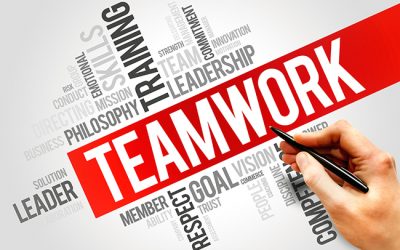In our most recent blog, we talked about how recruiting the best people for our team will help contribute to a safe and productive environment. So, once we have the best people in the right places on our team, how do we create the best atmosphere for growth?
In this blog, we consider some questions that will help us give the most to our team and get the most from our team as we work together to create a pro-growth environment.
Are we providing opportunities for individual growth?
Someone once said, if you’re the smartest person in the room, you’re probably in the wrong room. When building an environment for growth, we are more successful when we connect our team with people, resources and opportunities that will encourage them to grow. In practice, this often combines two steps:
- Providing real opportunities to lead in a way best suited for their gifts and talents
- Equipping your team with personal leadership development that will offer opportunities for them to become better versions of themselves
There will be times when we offer, provide and equip, yet some people do not respond in a way that brings them closer to where we — and they — need to be to thrive in their current position. Because of this, we also need to develop a transition plan for people who are either not in the best position or are just not the right fit for our team.
Each of these actions has a cost. Offering leadership opportunities means allowing people the latitude to make mistakes as they learn leadership in real time. That means offering real opportunities with real benefits and real consequences, for them and for us. These opportunities will help them learn leadership in real time. How they respond to those opportunities helps us, as leaders, better understand if they are or are not a good fit.
Are we focusing on what’s possible?
Consider NASA. When that organization makes a mistake, even if it’s not, strictly, their “fault”, that mistake is front page news. Beyond the publicity, the stakes, for them, are literally life and death. That’s why they hire only the best people. Yet, they hire those people knowing they’re human, that even the best and brightest occasionally miscalculate.
So, is NASA focused primarily on the possible mistakes, or are they focused on what will happen when they succeed? They are, literally, reaching for the stars. Primarily focused on the possible, with the right people in the right positions to get them there. How does NASA get everyone committed and on the same page? A commitment to innovation, accountability and collaboration at every level of the organization. Here’s that mission, in their own words:
“Our employees have incentives and sometimes even requirements to be open and collaborative… Tracking employees’ performance in this regard demonstrates our commitment to innovation, accountability, and collaboration at all levels throughout the Agency. Our leadership development training promotes a culture of openness and collaboration as well.”
This mindset is shared by everyone on the team, which creates a positive pressure that is integral to building an environment that encourages success. In talking about the Law of Environment, John Maxwell put it this way: “It’s healthy to be in over your head from time to time … That’s how we grow stronger.”
That doesn’t mean tossing your people to the sharks just to see if they will swim. Challenges strengthen us most when we’re working in our area of strength.
As a leader, when we get to know our people and we learn their strengths, we are better able to challenge them in ways that strengthen them, rather than do them harm. In this way, we make our entire team stronger.
In our next blog, we continue the theme of developing an environment for success by looking at ways for both the manager and employee to feel valued and understood.
A customer service miscue leaves a lasting impression
In our last blog, we talked about the importance of investing in our team members personally, as well as professionally, and what that means for our organization. In this blog, I want to share a story about what can happen when leadership focuses on skills...
What Christmas means to me
This year, at Christmas, there are so many things tugging on our hearts. My husband, Bob’s, dad passed away earlier this year, and his mom was diagnosed with lung cancer. She will miss celebrating with us this year, because she’s having radiation...
Developing your team within an Employee Business Model
This is Part 3 in our series on building an Employee Business Model for your team. Previously, we talked about what an Employee Business Model is, what it will mean for your business, and how the hiring process is influenced by this approach to leadership....
How an Employee Business Model Builds a Better Team
In our last blog, we introduced the idea of the Employee Business Model, a daily plan to encourage and facilitate the personal and professional growth of our team members. When building and developing that plan, a leader considers every aspect of their...
What is your employee business model?
Building a successful business doesn’t work unless we build a solid, well-developed business model. Even then, there is risk. The right business plan accounts for the risks and works to mitigate the risk and maximize the potential. We do that through...
How Value Based Leadership Builds Long Term Success
Hey manager, quick question for you: When you think about how to get the most out of your team, what do you mean by “most”? How we answer that question reveals a lot about the way we think about our employees, and our approach tends to create a lot of the...








0 Comments